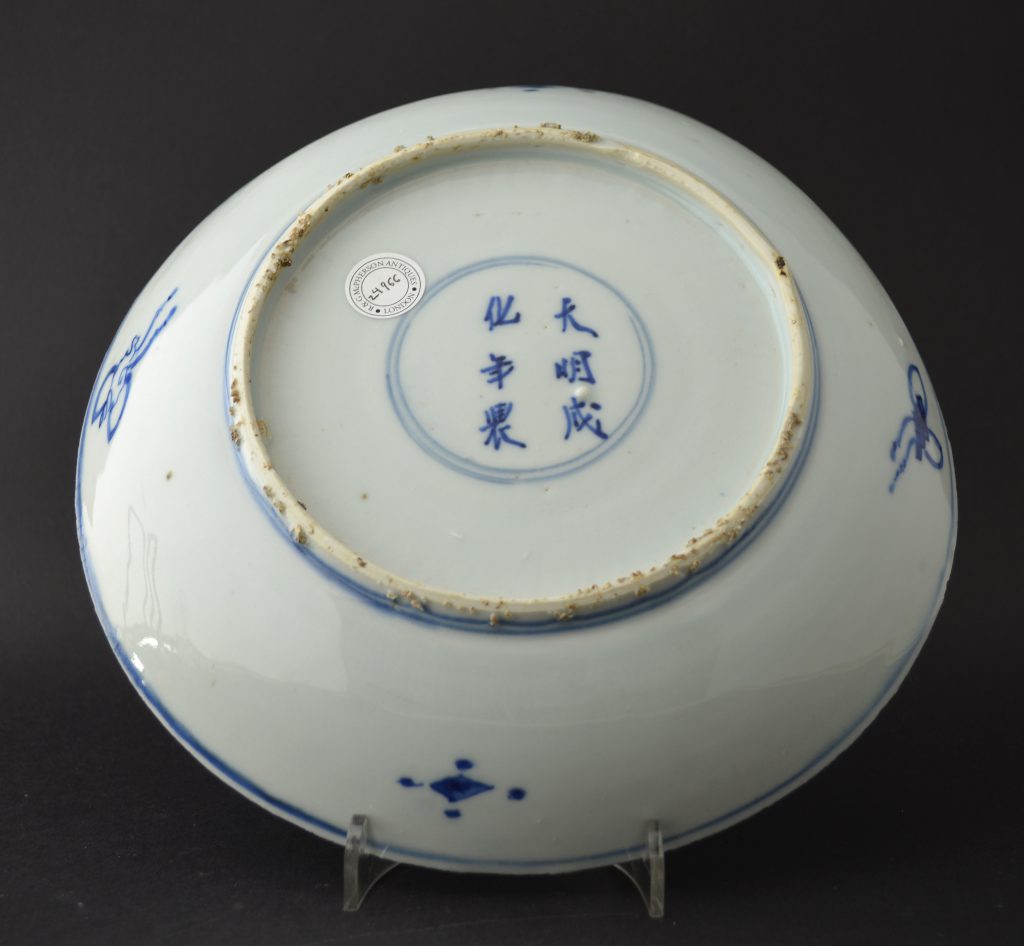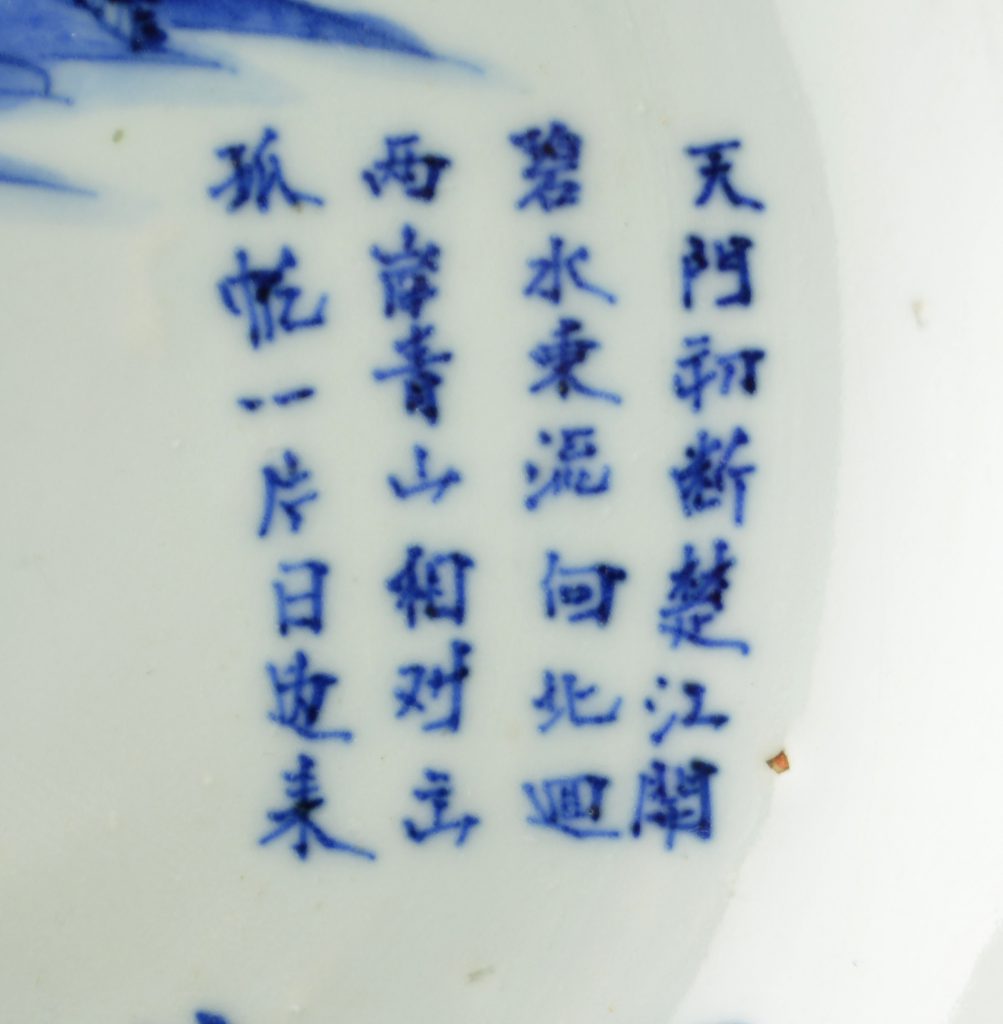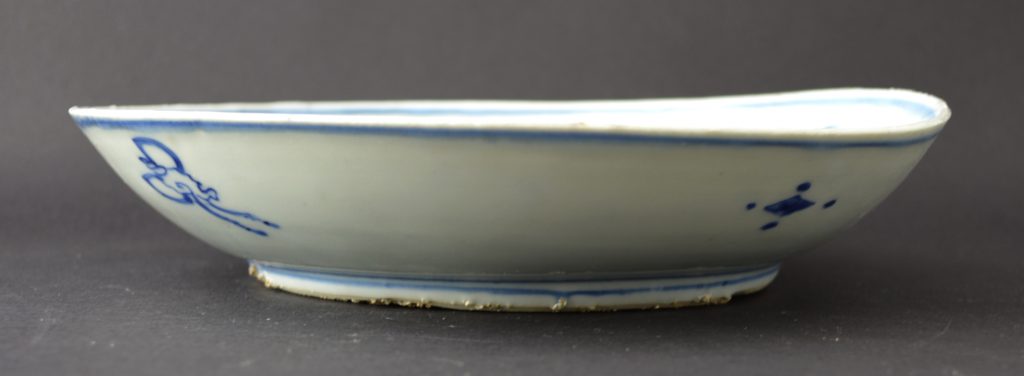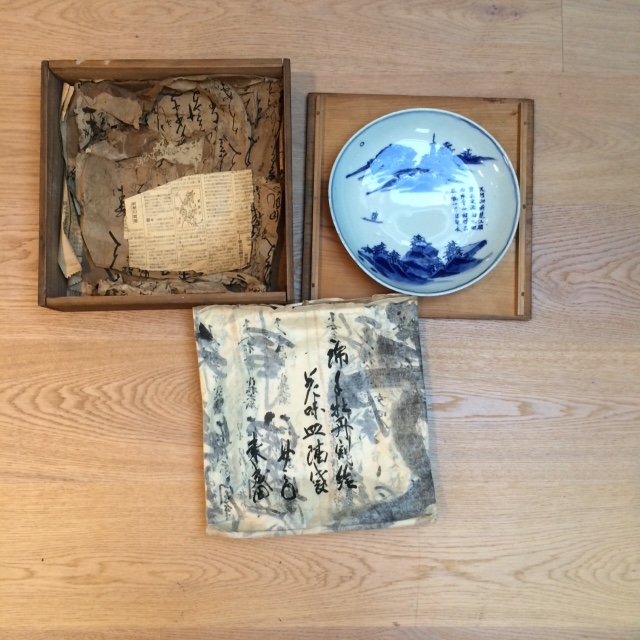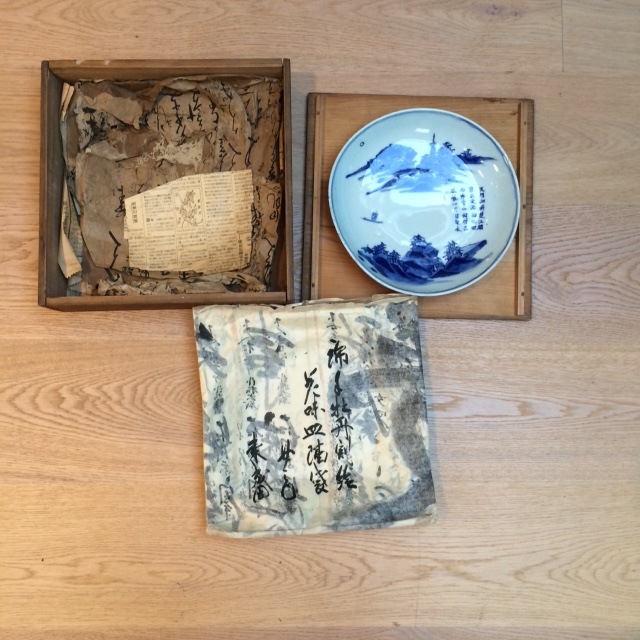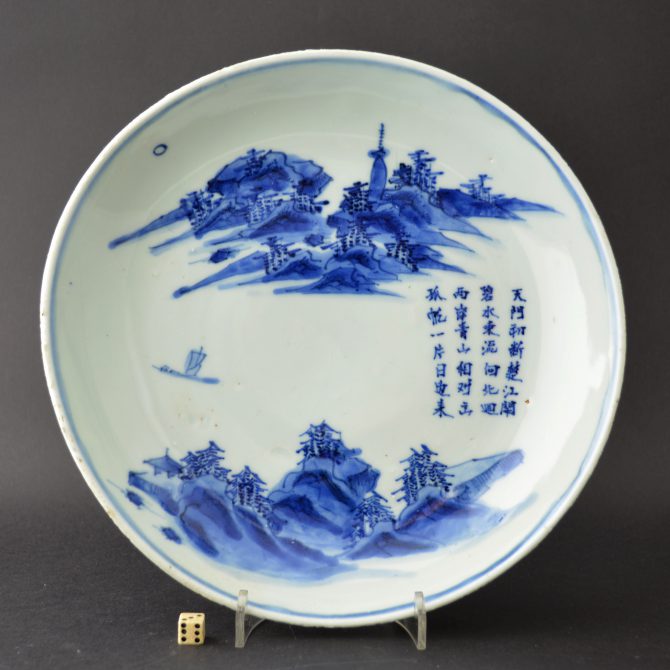
A Rare Ming Blue and White Poem Dish for the Japanese Market, Tianqi or Chongzhen c.1620 – 1630
A rare Ming porcelain poem dish depicting the Chu river, made for the Japanese market, Tianqi or Chongzhen c.1620-1630. The foreground painted with hills, trees and small buildings, the mid ground has a small solitary fishing vessel and a four line poem, the background landscape is an island with a pagoda on top of a rocky hill with other hills, trees and small dwellings. The base with an apocryphal Ming mark, Chenghua (1465-1487). With an old Japanese box.
SALE PENDING
- Condition
- Very minor fritting, part of the rim is warped.
- Size
- Diameter : 21.3 cm (8 1/4)
- Provenance
- From a Private English Collection of 17th and 18th Century Chinese and Japanese Porcelain.
- Stock number
- 24966
- References
- A Ming blue and white porcelain dish of this design is in the Butler Collection, it is illustrated with a polychrome version of the same design. Sir Michael Butler "It is extremely rare in the late Ming to find the same decoration on blue and white and enamel pieces" Chinese Porcelain, The Transitional Period 1620-1683, The Michael Butler Collection, compiled by Princessehof Museum, introduction by Michael Butler, Published by th Princessehof Museum, Leeuwarden 1986. ISBN 90-71588-02-5) page 32, plate 23. This blue and white Ming porcelain dish is shown again with the polychrome example, see : Seventeenth Century Jingdezhen Porcelain from the Shanghai Museum and the Butler Collection (Shanghi Museum,2006. ISBN 1-85759-417-7) page 58, plate 20a. For another two Ming porcelain dishes again one in blue and white, the other polychrome see : The Peony Pavilion Collection: Chinese Tea Ceramics For Japan` Christie`s, London, 12th June 1989 lot 352 and 354.
Information
My thanks to Mr. Thong Yok Ngiam for the identification of the poem and the translation. I have kept the translation from Sir Michael's catalogue below.
It intended to reproduce Tang dynasty poet, Li Bai's poem "Viewing the Tianmen (heaven gate) Mountain" with some mistakes.
《望天门山》 唐 - 李白
天门中断楚江开,
碧水东流至此回。
两岸青山相对出,
孤帆一片日边来。
Most Chinese literatures interpret this poem as below:
- The Tianmen Mountains are divided as the Chu River flows through. (the section of Yangzi River that was part of the Chu nation during the Warring States period.)
- The blue waters flow easterly here then turn to the North.
- The green hills of two banks stare at each other as the waters flow.
- A lone sail returns from where the Sun is. (This perhaps sugests an evening scene when the Sun was on the West)
As Translated in Sir Michael Butler's Catalogue
The Poem :
Where the gate of heaven first closes,
the Chu River begins,
It's blue waters flow to the east, then turn,
to the north.
On the west bank, green hills rise in
succession,
There, each day, a single lonely sail
returns.
Ming Porcelain for Japan :
During the late Ming Period the Chinese made a large among of porcelain for the Japanese market, it was made from the Wanli period (1573-1620) and ended in the Chongzhen period (1628-1644), the main period of production being the 1620`2 and 1630`s. The porcelain objects produced were made especially for the Japanese market, both the shapes and the designs were tailored to Japanese taste, the production process too allowed for Japanese aesthetics to be included in the finished object. Its seams firing faults were added, repaired tears in the leather-hard body were too frequent to not, in some cases, be deliberate. These imperfections as well as the fritting Mushikui (insect-nibbled) rims and kiln grit on the footrims all added to the Japanese aesthetic. The shapes created were often expressly made for the Japanese tea ceremony meal, the Kaiseki, small dishes for serving food at the tea ceremony are the most commonly encountered form. Designs, presumably taken from Japanese drawings sent to China, are very varied, often using large amount of the white porcelain contrasting well with the asymmetry of the design.
Apocryphal Marks :
Apocryphal marks are frequently encountered on Chinese porcelain, particularly on Kangxi Blue and White Porcelain but also on Transitional porcelain like the present example. The mark of the Ming Emperor Chenghua who reigned from 1465 to 1487 being by far the most common, other Ming marks include Jiajing (1522-1566) and less frequently Wanli (1573-1620). These marks were not added to the piece to deceive, but more as a sign of reverence to earlier potters of the Ming dynasty (1368-1644). Occasionally they are used on pieces copying Ming Porcelain, these objects were probably made for collectors who could not afford the Ming original. Tianqi is an early period for such an apocryphal mark.
A Japanese Porcelain Version of this Design
An Rare Blue and White Japanese Porcelain Dish Based on a Late Ming Dish Made For the Japanese Market, Arita Kilns c.1680-1700. The Shallow Serving Dish is Painted with an Extensive Riverscape that has Small Dwellings Perched on Mountains with Pine Trees. The Right Hand Side has a Four Line Poem. The Base with Three Prominent Spur Marks.
Sold - 23466
